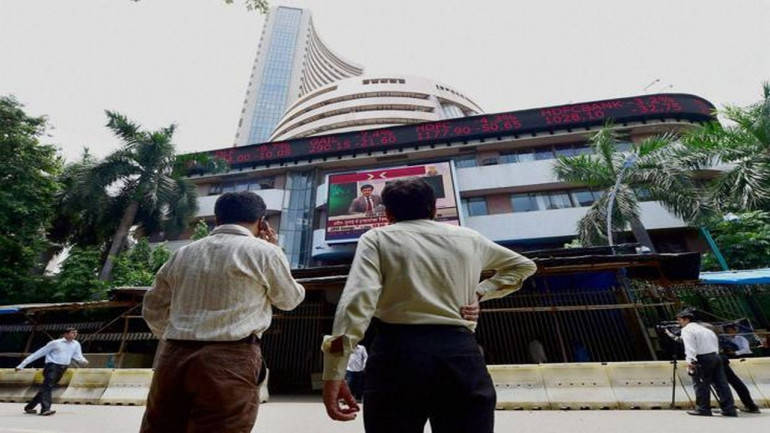The Nifty50 managed to recoup some losses towards the end of the trade on Wednesday but there is no confirmation of a trend. A direction move is required above 10600 fir bulls to take control or a breakdown below 10,300 will put bears in driving seat.
The Nifty50 which opened with a gap on the lower side managed to recoup losses and closed near its opening level forming a ‘Doji’ kind of candle on the daily candlestick charts.
According to Pivot charts, the key support level is placed at 10,457, followed by 10,422. If the index starts to move higher, key resistance levels to watch out are 10,531 and 10,570.
The Nifty Bank closed at 25,107, down 276 points or 1.09 percent. Important Pivot level, which will act as crucial support for the index, is placed at 24,968, followed by 24,829. On the upside, key resistance levels are placed at 25,219, followed by 25,331.
Stay tuned to Moneycontrol to find out what happens in currency and equity markets today. We have collated a list of important headlines from across news agencies.
US markets end lower
US stocks sold off late to end sharply lower on Wednesday, dragged down by continued worries over rising interest rates, and the Dow and S&P 500 capped their worst months since January 2016. The S&P 500 also snapped a 10-month straight run of gains, which had been its longest monthly winning streak since an 11-month run from March 1958 to January 1959.
The Dow Jones Industrial Average fell 380.83 points, or 1.5 percent, to 25,029.2, the S&P 500 lost 30.45 points, or 1.11 percent, to 2,713.83 and the Nasdaq Composite dropped 57.35 points, or 0.78 percent, to 7,273.01, Reuters reported.
Asia trades lower as dollar firms; Nikkei loses 250 points
Asian stocks declined early on the first trading day of the month after finishing February with losses. Declines in the region also tracked sharp losses seen stateside in the previous session. The Nikkei 225 declined 1.13 percent, or 250 points, CNBC reported.
SGX Nifty
Trends on SGX Nifty indicate a negative opening for the broader index in India, a fall of 64.5 points or 0.61 percent. Nifty futures were trading around 10,454-level on the Singaporean Exchange.
India world’s fastest growing economy, clocks GDP growth at 7.2% in Q3
The Indian economy grew at 7.2 percent in October-December 2017, and will likely expand 6.6 percent in 2017-18, latest official estimates said on Wednesday, amid strong revival signs in consumption spending and investment activity.
Latest estimates broadly mirror the trends seen in high frequency indicators like corporate income and industrial output data. It is in line with the government’s earlier estimates.
The CSO estimated that gross value added grew 6.7 percent in October-December from 6.2 percent in the previous quarter and 6.9 percent in the same quarter of 2016-17.
Core sector grows at 6.7% in January
Eight infrastructure sectors grew a faster pace of 6.7 percent in January against 3.4 percent in the year-ago month as petroleum refinery and cement output zoomed while steel power and coal production improved.
The eight core sectors — coal, crude oil, natural gas, refinery products, fertilisers, steel, cement and electricity — had grown by 4.2 percent in December and 7.4 percent in November this financial year.
Petroleum refinery production spurted 11 percent in January against a flat output in the year-ago month. Cement output jumped 20.7 percent in the month against 13.3 percent contraction in the year-ago period.
Economy on track to acceleration: Bibek Debroy
Chairman of the Economic Advisory Council to the Prime Minister (EAC-PM), Bibek Debroy said that India is on the right path to become one of the fastest expanding major economies in the world surpassing China.
The growth, he said, will pick up more in the upcoming quarter driven by the government’s commitment to implement structural reforms, and aided by higher growth in the industrial and services sectors as well as spending by the Centre.
April-Jan fiscal deficit touches 113.7% of full-year target
India reported on Wednesday a fiscal deficit of Rs 6.77 trillion (USD 103.72 billion) for April-January or 113.7 percent of the target originally set for the fiscal year that ends in March.
Net tax receipts in the first ten months of 2017/18 fiscal year were Rs 9.7 trillion, government data showed, Business Standard reported.
Morgan Stanley cuts overweight exposure to India by 50 bps
Morgan Stanley reviewed country allocation following sharp cuts seen in global equity markets including India in the last month. The global investment bank upgraded Singapore to overweight, upgraded Peru to Equal Weight and reduced Overweight on India.
This stance by Morgan Stanley largely reflects some disappointment in earnings. In India Equity Strategy Alpha Almanac: Wobbling on a Tightrope, Ridham Desai highlighted the impact of higher oil prices, the election calendar and prospect of a higher deficit as obstacles for the market index.
H G Infra Engg IPO subscribed 5 times on last day
The initial public offer of H G Infra Engineering was subscribed 5 times so far on the last day of bidding on February 28. The IPO, to raise Rs 462 crore, received bids for 6,02,90,505 shares against the total issue size of 1,21,37,070 shares, translating into an oversubscription of 4.97 times, data available with the NSE till 1900 hrs showed.
SBI Capital Markets and HDFC Bank are managing the company’s IPO.
India to grow 7.6% in 2018 amid note ban disruption: Moody’s
Moody’s Investors Service on Wednesday estimated that India will grow 7.6 percent in calendar year 2018 and 7.5 percent in 2019, amid signs of economic recovery from impact of demonetisation and GST.
“There are some signs that the Indian economy is starting to recover from the soft growth patch attributed to the negative impact of the demonetisation undertaken in 2016 and disruption related to last years rollout of the Goods and Service Tax,” it said.
26 AMCs agree to pay to BSE service charge for BSE StAR MF platform
BSE said that 26 asset management companies out of the total 37 AMCs have agreed to pay a nominal service charge for services on its mutual fund distribution platform, a release from the exchange stated.
The mutual fund industry has agreed to pay a nominal service charge per transaction on bilateral basis to BSE for its services being provided through the BSE StAR MF platform. BSE StAR MF has witnessed an overall growth of over 565 percent and in terms of SIPs registered on BSE StAR MF saw a growth of over 800 percent in the last 2 years.
BSE to delist 36 companies from March 5
BSE will delist 36 companies from next week as trading in their shares has remained suspended for over three years. These companies will be delisted from March 5, BSE said in two separate circulars on Wednesday.
In a circular, BSE said that 28 companies, that have suspended for more than 3 years and are under liquidation, will be delisted. Among the firms to be delisted are Mafatlal Dyes & Chemicals, Veronica Laboratories, Polar Pharma India, Shonkh Technologies International and Bellary Steels & Alloys.
Rupee dives to 3-month low on strong dollar
The rupee fell by a steep 30 paise to end at a fresh three-month low of 65.17 against the US dollar, extending its losses for the third day after Federal Reserve’s hawkish comments reignited interest rate hike fears.
It plunged to a low of 65.32 in intra-day levels before regaining some lost ground on suspected RBI intervention towards the tail-end trade and finally settled at 65.17, showing a loss of 30 paise or 0.46 per cent — its lowest closing since November 16.
Sandhya Marines files papers for IPO
Sandhya Marines Ltd, an Andhra Pradesh-based exporter of value added frozen seafood products, on Wednesday filed the draft red herring prospectus (DRHP) for its initial public offering (IPO).
The share sale will comprise a fresh issue worth Rs300 crore and an offer-for-sale of 12.6 million shares by the company’s promoters, according to the share sale documents. It has appointed Karvy Investor Services Ltd and SBI Capital Markets to manage the share sale, Mint reported.
3 stocks under ban period on NSE
Security in ban period for the next trade date under the F&O segment includes companies in which the security has crossed 95 percent of the market-wide position limit.Securities which are banned for trading include names such as Fortis, JP Associates and Oriental Bank of Commerce.

